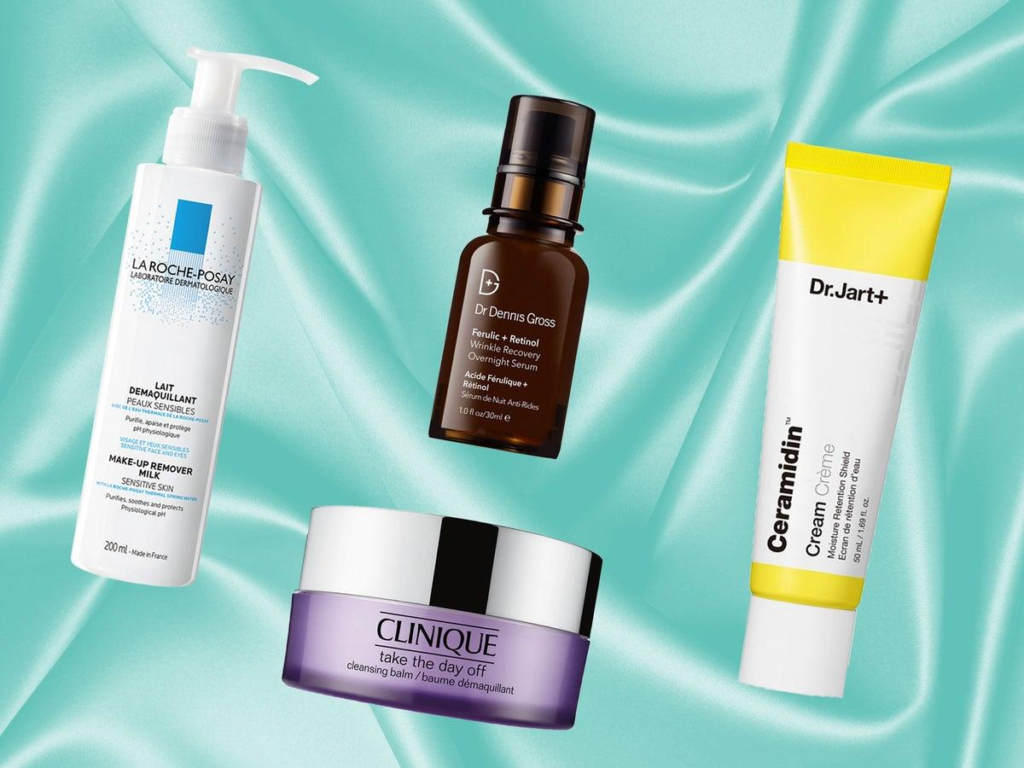
The morning and night routines for glowing skin are not the same. Your major goal in the morning is to protect your skin from UV radiation and pollution. The skin, on the other hand, repairs itself at night.
That’s when regenerative and relaxing substances come in handy to help the mending system. You are not defending your skin during the night regimen for glowing skin, but rather applying actives.
Now that you understand the distinction, here’s a breakdown of the kind of formulas you’ll need during the day versus at night.
Morning Hours for Glowing Skin’s Daily Skin Care Routine
Wash your face with a gentle face wash first thing in the morning, especially if you have eczema or acne.
Apply a few drops of vitamin-rich serum to your skin to protect it from environmental assaults.
Apply a large dose of SPF 30 moisturizer to exposed skin after that.
A bright face necessitates more than just the use of the occasional facial or skincare product. A regular skincare practice can aid in the maintenance of healthy, bright skin. Here is the best skincare routine for a radiant complexion.

Cleansing
The first and most important step in any skincare routine is cleansing. It aids in the removal of dirt, oil, and pollutants from your skin. Choose a cleanser that is gentle, non-irritating, and non-drying for your skin type. Choose a cream-based cleanser if you have dry skin. Choose a foamy or gel-based cleanser for oily skin. Massage the cleanser into your skin carefully, then rinse with lukewarm water.
Exfoliating
Exfoliating aids in the removal of dead skin cells, the unclogging of pores, and the promotion of cell turnover. Exfoliators with abrasive chemicals, such as sugar or oats, should be avoided since they can harm your skin. Depending on your skin type, exfoliate your face once or twice a week.
Toning
Toning helps to balance the pH levels of your skin, eliminate any lingering impurities, and prepare it for the next phase in your skincare routine. Choose a toner that is appropriate for your skin type. If you have dry skin, look for a toner with moisturizing elements like hyaluronic acid. Choose a toner containing salicylic acid for oily skin.

Treating
Using active substances to treat your skin can assist to address certain skin conditions. Select a treatment that addresses your specific skin condition, such as acne, dark spots, or fine wrinkles. After toning and before moisturizing, apply the treatment product.
Moisturizing
Moisturizing is vital for keeping skin healthy, moisturized, and bright. Choose a moisturizer that is appropriate for your skin type. If you have dry skin, look for a moisturizer with emollients like shea butter or glycerin. Choose a lightweight moisturizer with hyaluronic acid for oily skin. After cleaning, toning, and treating your face and neck, apply moisturizer.
Protection from the sun
Sun protection is essential for avoiding sunburn, premature aging, and skin cancer. Apply broad-spectrum sunscreen with at least SPF 30 to your face and neck every day, even on cloudy days.
Hydration
Hydration is essential for maintaining healthy, bright skin. Keep your skin hydrated from the inside out by drinking plenty of water. Make an effort to drink at least eight glasses of water per day.

Toner (hydrolyze)
This serves as a solid foundation for all that follows. My favorite hydrosols contain trace amounts of essential oils like lavender or rose, which aid in the penetration of active ingredients into the skin (see next step).
Serum and active ingredients
Products that contain a substance, such as salicylic acid, that is designed to create a certain effect are referred to as “actives.” They are typically “brightening” products or “correctors.” These products, along with serums, address specific issues, concerns, or benefits for your skin. A serum is applied initially, allowing it to penetrate the skin. I then apply my actives and let them sit for a few minutes before proceeding. This will aid in the sealing of the other products.
In addition to the techniques outlined above, here are some more suggestions to help you attain beautiful skin:

Get enough sleep: Sleep deprivation can induce stress and inflammation, which can result in dull, tired-looking skin. Make an effort to get seven to nine hours of sleep per night.
Maintain a healthy diet: A nutritious diet high in fruits, vegetables, whole grains, and lean meats can help nourish your skin from within. Processed and sugary foods, which can trigger inflammation and breakouts, should be avoided.
Regular exercise can assist increase blood circulation, which helps provide oxygen and nutrients to your skin and promote a healthy shine. Aim for at least 30 minutes of exercise per day.
Control your stress: Stress can promote inflammation and breakouts, resulting in dull, tired-looking skin. Use stress-reduction strategies like yoga, meditation, or deep breathing.
Smoking and excessive alcohol use can promote premature aging and damage to your skin’s collagen and elastin fibers, resulting in wrinkles and drooping skin. To keep healthy, beautiful skin, avoid smoking, and limit alcohol use.
